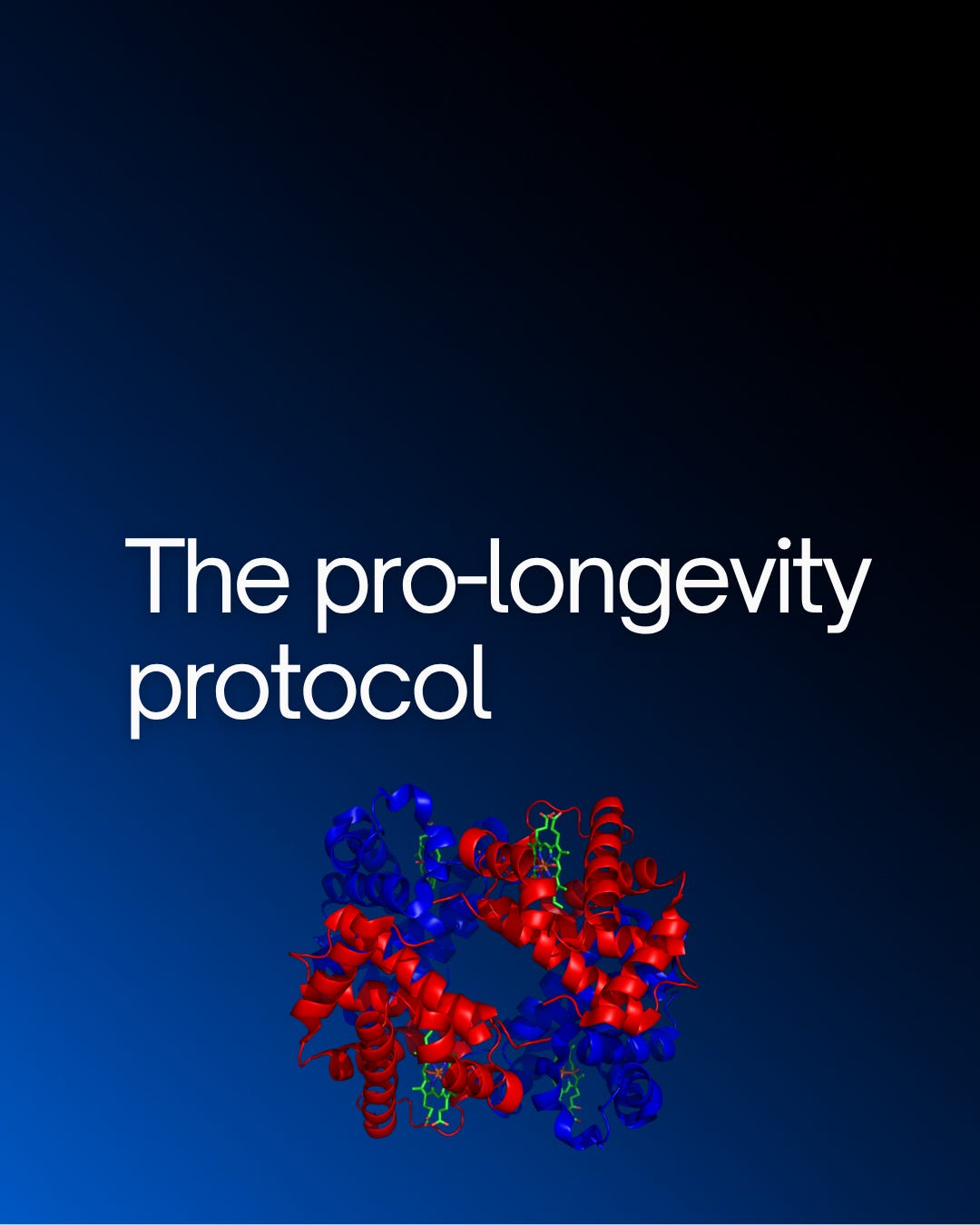The Pro-Longevity Protocol Part 1: Why HbA1c Is the most important biomarker you're Ignoring
The most logical argument your going to hear today #33
Some of my clients have been asking me for a long time: if I had to dial in just a few biomarkers, which ones would I pick?
This question came up after I highlighted a Gary Brecka post on Twitter. And honestly, it got me thinking about what actually moves the needle when it comes to longevity.
First, let me be clear about something.
Bloodwork doesn’t tell the full picture. It’s a snapshot in time. But if that snapshot is replicable over a long stretch, it starts to reveal patterns. And patterns reveal mechanisms. And mechanisms reveal leverage points.
If I could only pick one biomarker to obsess over, it would be HbA1c.
I’m going to explain why in depth. But more importantly, I’m going to teach you how to optimize it yourself. Because I want you and everyone reading this to experience the full benefits of having an HbA1c as low as 4.8%.
I know what you’re thinking.
“The epidemiological studies say that below 5%, the curve flattens. It has no effect on overall mortality risk.”
I’ve heard that argument. And while it’s true as an isolated statistical point, that’s not what I want you to focus on. Because if we think mechanistically if we actually understand what it means to maintain a low HbA1c the picture changes completely.
Let me show you why.
What HbA1c Actually Is (And Why It Matters)
I’ll keep this simple so we can move through my argument fast.
HbA1c is glycated hemoglobin. It’s used as a marker of your average blood glucose over the past 3 months. This makes sense because 3 months is roughly the lifespan of a red blood cell before it’s recycled.
There’s another metric worth tracking: fructosamine, which measures the glycation of the protein albumin. Albumin has a half-life of about 35 days, so fructosamine gives you a shorter-term view of blood glucose control. Think of it as a more recent snapshot.
But here’s the key: HbA1c isn’t just a number. It’s a proxy for how much glycation is happening in your body.
And glycation is where things get interesting.
The Glycation Cascade: What Happens When Your Blood Sugar Stays High
Let’s talk about Advanced Glycation End-products (AGEs).
AGEs are harmful compounds formed when sugars react with proteins or lipids in a non-enzymatic process called the Maillard reaction. You’ve seen this reaction before it’s what happens when you cook food and it turns brown. Caramelization. Browning. That’s glycation.
Now imagine that happening inside your body.
When more glycation occurs meaning an excess formation of AGEs several harmful biological cascades are triggered. Here’s what happens at both the cellular and systemic levels:
1. Proteins Get “Sticky” and Lose Flexibility
Glycation is when sugar molecules (mainly glucose or fructose) non-enzymatically bind to proteins, lipids, or DNA. This alters their structure and function.
•Collagen becomes stiff
•Enzymes lose activity
•Receptors misfire
Think of it like caramelization inside the body. Proteins literally get sticky and lose their flexibility.
Glycation itself is a natural process. Your body can handle a baseline level of it. But excess glycation is where the damage compounds.
My Argument: Why Keeping HbA1c Low Is a Pro-Longevity Lever
Here’s the logical chain I want you to follow:
Low HbA1c → Less Glycation → Less AGE Formation
When your HbA1c is low, it means your average blood glucose is low. Less glucose floating around means less opportunity for sugar molecules to bind to proteins and lipids. Fewer AGEs are formed.
Less AGEs → Less Chronic Inflammation
AGEs trigger inflammatory pathways. They bind to receptors called RAGEs (Receptor for Advanced Glycation End-products), which activate NF-κB, a master regulator of inflammation. This leads to chronic low-grade inflammation that compounds over time.
Less glycation = less inflammation = less cellular wear and tear.
Less Inflammation → Better Insulin Sensitivity
Chronic inflammation impairs insulin signaling. When your cells are inflamed, they become resistant to insulin. This creates a vicious cycle: high blood sugar → more glycation → more inflammation → worse insulin sensitivity → higher blood sugar.
Keeping HbA1c low breaks this cycle.
Better Insulin Sensitivity → Improved Nutrient Partitioning
When your insulin sensitivity is high, your body is better at directing nutrients where they need to go. Glucose gets shuttled into muscle cells instead of being stored as fat. Amino acids are used for muscle protein synthesis instead of being oxidized for energy.
This means you can accrue muscle mass more efficiently. And muscle mass is one of the strongest predictors of longevity.
Better Glucose Utilization → Healthier Mitochondria
When your mitochondria can efficiently oxidize and utilize glucose, they produce energy without generating excessive reactive oxygen species (ROS). This keeps your mitochondria healthy and functional.
Damaged mitochondria = accelerated aging. Healthy mitochondria = sustained energy production and cellular resilience.
Less Glycation → Maintenance of the Collagen Matrix
Collagen is the most abundant protein in your body. It’s what gives your skin elasticity, your joints flexibility, and your blood vessels structural integrity.
When collagen gets glycated, it becomes stiff and brittle. This is why diabetics age faster—their collagen is literally caramelizing.
•Glycated collagen in your skin = wrinkles and sagging
•Glycated collagen in your arteries = stiffness and high blood pressure
•Glycated collagen in your joints = reduced mobility and pain
Keeping HbA1c low preserves the structural integrity of your collagen matrix. This isn’t just about looking younger. It’s about maintaining functional capacity as you age.
Keep reading with a 7-day free trial
Subscribe to Biohacker to keep reading this post and get 7 days of free access to the full post archives.


